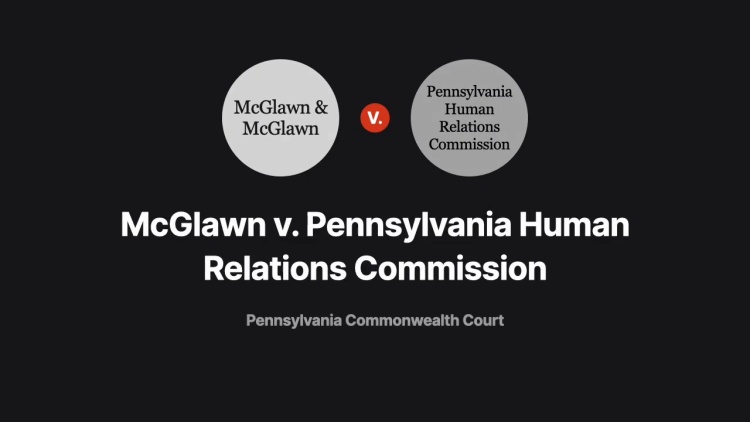McGlawn v. Pennsylvania Human Relations Commission
Pennsylvania Commonwealth Court
891 A.2d 757 (2006)
- Written by Abby Roughton, JD
Facts
Reginald McGlawn (defendant) worked for mortgage broker McGlawn and McGlawn, Inc. (the broker) (defendant). Between 1998 and 2000, the broker arranged subprime loans for Black property owners in Philadelphia County, Pennsylvania. Two of the property owners (the complainants) filed complaints with the Pennsylvania Human Relations Commission (the commission) (plaintiff), alleging that the broker had unlawfully discriminated against them in the terms and conditions of their loans based on their race and the fact that they lived in predominantly Black neighborhoods. The complainants also asserted that the broker had targeted them for predatory and unfair mortgage loans based on their race. The commission found that the broker had engaged in reverse redlining—i.e., the practice of extending credit on unfair terms to residents of specific communities based on the income, race, or ethnicity of those communities’ residents. No Pennsylvania appellate cases had addressed whether reverse redlining was prohibited under the Pennsylvania Human Relations Act, but the commission concluded that reverse redlining and other predatory practices violated the act based on cases arising under the federal Fair Housing Act (FHA). The commission further found that the broker’s predatory and dishonest activities had resulted in unfair and predatory mortgage loans, including loans with high interest rates and other burdensome terms. The commission found that the broker had engaged in targeted advertising directed toward Black residents in Black neighborhoods in Philadelphia County. The commission issued an order assessing a $25,000 penalty and directing McGlawn and the broker to pay the complainants’ actual damages and damages for embarrassment and humiliation, among other things. McGlawn and the broker petitioned for review of the commission’s decision, asserting that the commission could not create a new cause of action for reverse redlining under the act, that there was no support for the commission’s determination that the broker had engaged in reverse redlining, and that the damages award was excessive.
Rule of Law
Issue
Holding and Reasoning (Simpson, J.)
What to do next…
Here's why 899,000 law students have relied on our case briefs:
- Written by law professors and practitioners, not other law students. 47,000 briefs, keyed to 994 casebooks. Top-notch customer support.
- The right amount of information, includes the facts, issues, rule of law, holding and reasoning, and any concurrences and dissents.
- Access in your classes, works on your mobile and tablet. Massive library of related video lessons and high quality multiple-choice questions.
- Easy to use, uniform format for every case brief. Written in plain English, not in legalese. Our briefs summarize and simplify; they don’t just repeat the court’s language.





